"It all started as a pile of boards.” I wrote that in the third grade as the first sentence of a story about a small scow, all of 42″ long, that Dad and I built together when I was eight years old. It was as good a start as any, even now for this tale about the building of CURLEW, a 16′ Whitehall, and the history that an old, eccentric family in the hills of Mississippi has had with building wooden boats far from the sea.CURLEW began as I was making the transition from teaching school to becoming a musician and caretaker for the family land here just north of Vicksburg, Mississippi. The large tract of land has been in the family since my great-great-grandfather, Benson Blake, settled here in the 1830s. Once a grand sweep of woods and farmland, it is much reduced, but six generations later, we Blakes are still here.My desire to build a boat such as CURLEW would never have gotten anywhere if I had not had the good fortune to have my father, Daniel Blake, also living at the family place. He has built a string of wooden boats over the years, and it is never too difficult to talk him into another one. I started with several design requirements for my boat: It must be round-bottomed, trailerable, big enough for four adults, and it must sail. We pondered the classics and after much wrangling, we had settled on the 14’ New York Whitehall on page 197 of H.I. Chapelle’s American Small Sailing Craft, but it was a bit small and had no sail. The 16’ Boston Ship Chandler’s Whitehall on the next page seemed a bit narrow in beam for what I wanted, so we went back the New York Whitehall, stretched it to 15’11”, then added a centerboard and a sprit rig similar to the Boston Whitehalls. We also decided on lapstrake planking rather than carvel because it is stronger, lighter, and we wouldn’t have to wait for the seams to take up.
Join The Conversation
We welcome your comments about this article. To include a photo with your remarks, click Choose File below the Comment box.

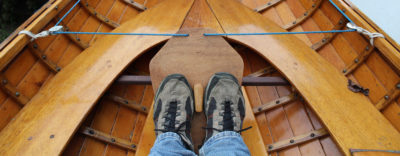
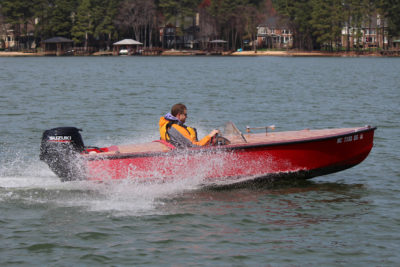
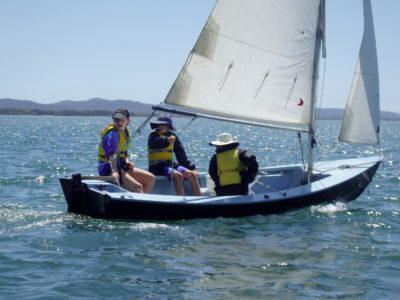
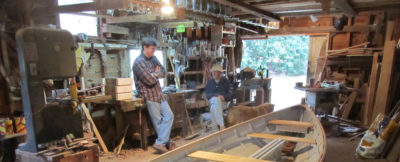
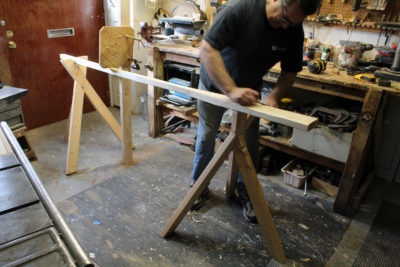

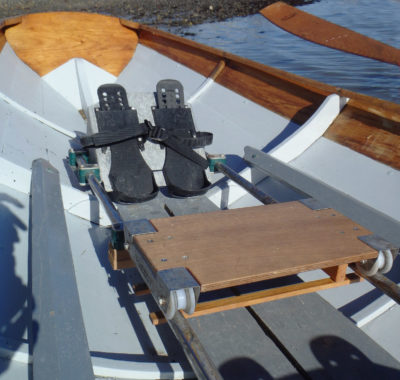
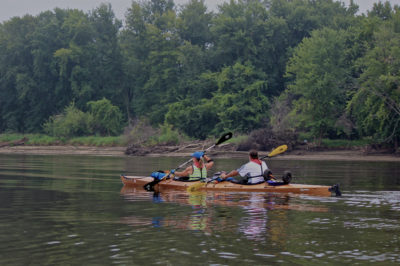
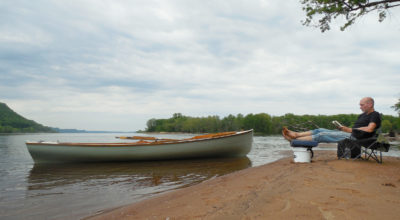
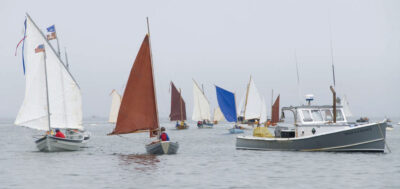
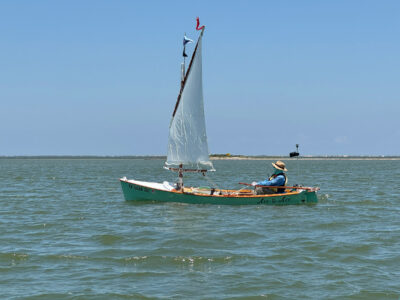

A fascinating chronology with technical anecdotes, telling the history of a family’s skill and love of boat design and construction, through the generations.
Thank you! I enjoyed writing it. Julia says hello!
I am researching history of TURTLE DOVE built by Daniel in 2001. Would like to know if there are any pictures/paintings of the original ship built by his father.
Love this. I grew up with Danny, Nick’s dad, and my dad was one of Nick’s grandad’s best friends. I absolutely remember the THELMA TUGGARD.
Hi Carol! The stories of those times could fill a book.
I had to chuckle at your reference to “the moaning chair.” Howard Chappelle said that every boat shop needs one, so, it appears your shop is complete! Fortunately, but not due to my boat carpentry skills, I have only had to use mine occasionally.
CURLEW went together with little fuss. My current boat, yet to be named, has employed the chair far more. That is what lofting 1/4 size and tweaking by eye as you proceed will do, I suppose. I am nearly finished now, I stood back this morning and thought, “It’s a miracle, she looks pretty good.” In a few weeks, I guess I will see if she floats as good as she looks.
The Violetta’s hull sure looks like a Gil Smith catboat from the Great South Bay of Long Island, New York.
Yes, to be honest I am really not sure what she is or where she was built. Maybe a one-off by a Gulf Coast builder, perhaps brought down from more northern climes? The last of the folks who could tell me for sure died in the ’50s. I hear the folks at WoodenBoat are puzzling over her, maybe they can shed some light. I will have to have a look at a Gil Smith Catboat hull.
Wow, Nick, this is so amazing. I actually took videos of Danny while he was building the boat in his backyard. I sure wish I can find them. I’ll keep looking. Amazing!
Those would be fun to see. Glad you enjoyed the article, Janice.
What a grand story of a family boat building tradition going way back. What treasures the Mason jars in the overhead must hold. The moaning chair reminds me of a long bench next to the sun-warmed brick wall of WoodenBoat School. At lunch time after some hard boatbuilding by a bunch of older folks the bench earns its name, “ the moaners bench.” Thanks for giving me an hour of wonderful mind wandering.
Thanks! I am glad you enjoyed reading it. I certainly enjoyed writing it. CURLEW was meant to be my experiment with boatbuilding as an adult and a way to connect with my dad and the previous generations, but now I am hooked. HERON, a 20′ motor skiff, is about to roll out of the shop now. I am already planning a 14′ faering build after this. I did some wood carving for a church a few years ago and I thought I might ornament the stem on the faering with relief carving. Yes, it is official, I am hooked.
Thank you again!
Nick
Thank you for reading my article! I think there have been a couple of famous CURLEWS, and maybe even a design with that name. The idea for the name was twofold for me. First, there is a line in a Longfellow poem, that mentions “the curlew’s call.” It was called “The Tide Rises and the Tide Falls.” My taste for the fireside poets sent one of my professors into hysterics in college. Which doesn’t bother me at all, I didn’t like his taste in poetry either, so it all works out! Second, my bird book says that the Curlew “is a rare visitor to Mississippi, but has been spotted on occasion due to variations in migration.” This seemed applicable for a small wooden sailing boat in Mississippi, which is also a rather rare thing.
Thanks again for reading,
Nick
This the most interesting site on the web.
I must go back and read it all again.
CURLEW? Rings a bell. There is a famous wooden sailboat by that name, very old, wish I could remember,oh well, thank you very much.
Thanks!
Very well written. Fascinating story, great photos
Nicholas, this is a wonderful story about a wonderful family! I’m proud to be your cousin. It was a pleasure to spend vacations with your dad, Sister, Bradley and Henry. I remember when your grandfather had built a boat for each child for their house at Cotton Bayou. Carmichael and Fran were my parents’ favorites, and we have many good memories of times with the Blakes. Each of your grandparents was a cousin of my dad Richard Conner, and he claimed to have introduced them. Kudos to you for weaving your family history into the record of your many family boats!
Thank you!
I have heard wonderful things about Richard Conner, and of course it is always nice to hear from my Natchez cousins. Although the seeds and the branches spread far, we draw from the same root. All the best, cousin!
Thanks again for reading,
Nick
Able Seamen Patrick and Andrew will work their way before the mast, soon to pay out line on their own vessels. One foot on the gunwale, one arm in the rigging, they will scan the horizon for friend and foe, reading the sea as they do the lay of a rope, and bringing life’s bountiful haul on board for celebration. Such shall boldly be the future, and let the timid stand on the shore.
Henry L. Blake
[From the author’s uncle. Patrick and Andrew are the author’s sons. —Ed.]
That’s talk to stir the coals of a sailor’s blood! Blunderbusses and cutlasses stand ready! May the galleons they chase be fat, slow, and poorly armed.
Nick, what a great and loving story. My name is Mel Oakes and my father, Fred Oakes, was a friend of your grandfather. I was privileged to spend a few hours with your family during the construction of the BOGLE. The beautiful handmade tools used to build the boat were a joy to behold. Mr. Blake gave me a couple of pieces of persimmon which I still prize. Since I had a love of steam engines, he gave me a tour of the family engine he was restoring. As expected his work was flawless. I later sent him some information about steam engines and he kindly sent me a small photo book of the engines he had put together. I have added these pictures to a web page on my family website with some research I have done on the engine. My brother, Donald, still lives in Vicksburg. Again, many thanks for this very special article.
Nicholas, so very pleased to learn more about your family’s long boatbuilding legacy. Especially happy to see photos of your dad, Dan, with whom I spoke 3 or 4 years ago. I have owned MERRY SAVAGE since February 1999. When I bought her from her 2nd owner, Tom Farbanish, she carried no name. Because I love traditional wooden working boats, I felt she should carry a name that reflected my heritage and hers. She now sports red “tanbark” sails and is named SAUDADES, a Portuguese term whose closest English equivalent is Nostalgia.
Ironically, when I bought your Dad’s boat, I had recently purchased a summer house in Wickford, Rhode Island, where, although I did not know it at the time, Paule Loring had built his Block Island Double-ender in 1948 from lines he had taken off the last surviving hull of her type on Block Island. It was from Paule’s boat that Howard Chapelle took the lines for the design he included in his American Small Sailing Craft, which your Dad used to guide his build of MERRY SAVAGE!
Talk about a design coming full- circle!
I take great joy in admiring, working on and sailing my boat that your Dad built. Whenever we sail, she draws admirers: power boaters turn 90 degrees off their course to speed over for a look. Sailboaters, being a bit more reserved, fall-off or head-up to sidle on over to “speak us.”
Please thank Dan again for the solid craftsmanship he built into her. Built in 1985, she creaks just a bit from her 33 years of shouldering aside our typically short, nasty Narragansett Bay southwesterly 2′ to 4′ afternoon chop, and from her swaying, unstayed solid 30′ masts, but is still solid, and this past fall had her garboards recaulked for the first time since your Dad built her. That bespeaks a first rate job of joinery. If you or your Dad ever get up here to Wickford, I’d be mighty pleased to have you come for a sail.
Your young boys are very lucky, I hope they get bit by the boatbuilding bug, and not get into many of those mindless video games. Outdoors is where it’s at. And make sure they know how much God loves them, and try to avoid sin, as it leads to ruin in many ways.
Nicholas,
A truly beautiful read which helped me recognise so much of my own history and culture and view of life.
A veritable family reunion in the comments! I don’t think I’ve ever read an article in WB or SBM that weaves together the personalities, family history and boat building so well. Families like the Blake’s made the US a great country.
Nick ~ are you still up in the Vicksburg area? I am just down the river at St Francisville (& Bayou Sara), and have double ender, a Nimble 24, that one of these days needs to follow that path south on the big river!